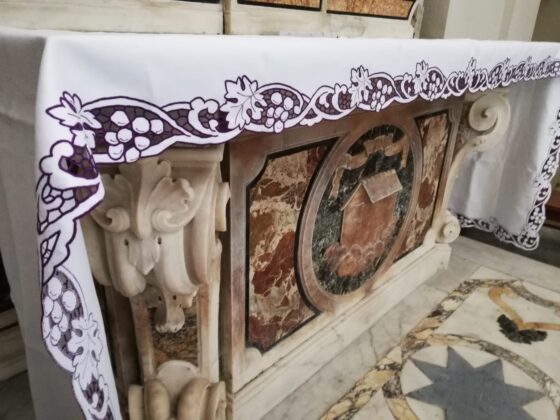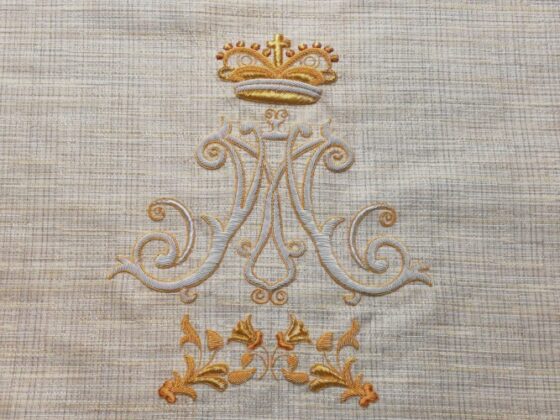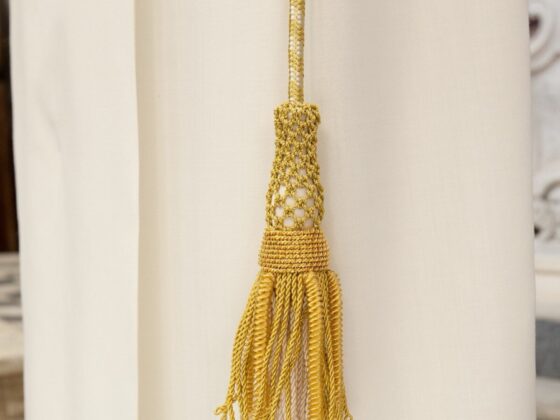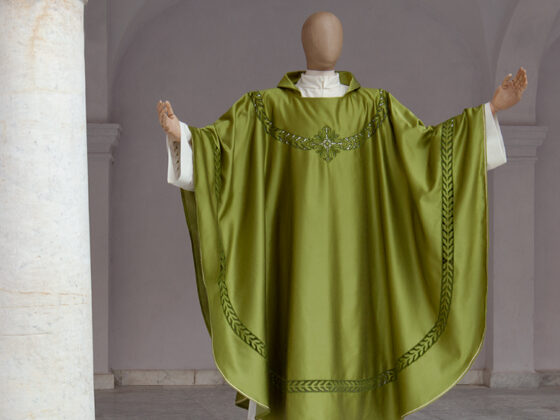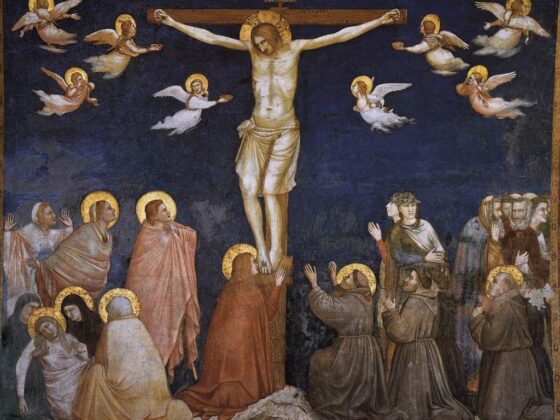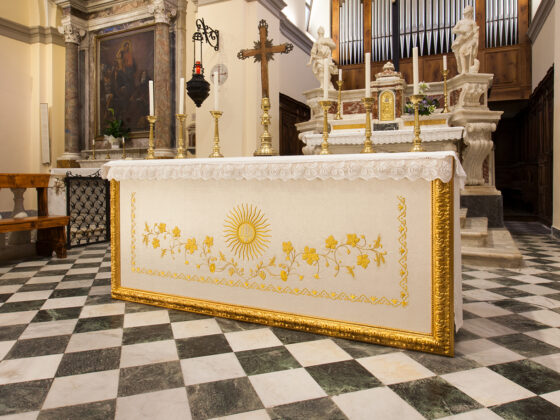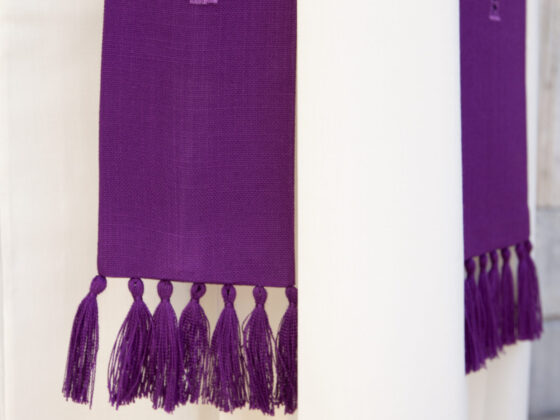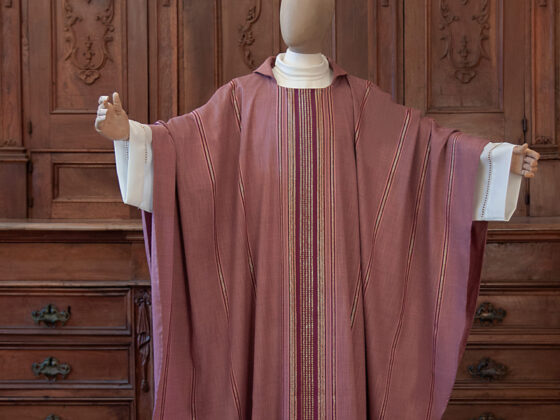In the early centuries of Christianity, there were no established rules regarding the colors of liturgical vestments. One of the most expensive methods for dyeing fabrics involved using the secretion of the purple snail. Thousands of these snails were required to dye even a single garment. Depending on the amount of secretion used, a range of colors could be obtained, from purple-violet to crimson red and even some shades of green.
Due to the lengthy process required to produce this dye and its resistance to washing, the color purple was associated with valuable garments reserved only for kings and princes. While the Church initially favored simple white vestments, as Christianity spread and the social recognition of high-ranking clergy grew, purple became widely used. This is evidenced by mosaics in Ravenna and Rome, where bishops are depicted wearing dark violet garments.
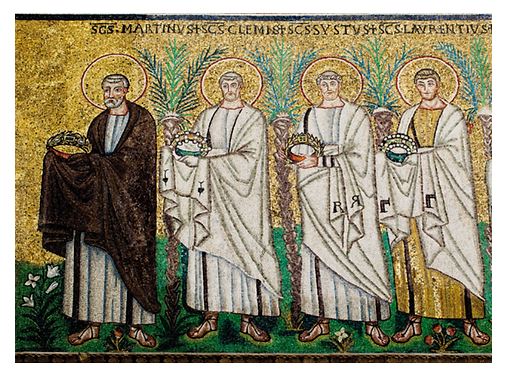
At the beginning of the Middle Ages, there was still considerable freedom in the use of liturgical colors. It was Pope Innocent III who issued the first canon of colors in the 12th century. This canon established four liturgical colors: white for feast days, red for Pentecost and the feasts of martyrs, black for Advent and Lent, and green for non-festive days.
Although it did not become a binding rule, it served as the foundation for the liturgical color norms established in 1570 by Pius V and included in the Church’s Missal at the time. This canon confirmed Pope Innocent III’s four-color scheme while incorporating minor modifications that had developed over the centuries (purple replaced black except on Good Friday, and rose was used on Laetare and Gaudete Sundays)..

The significance of red in the liturgy
The current Roman Missal prescribes the use of red on Passion Sunday (or Palm Sunday), Good Friday, Pentecost Sunday, celebrations of the Lord’s Passion, the feast of the Apostles and Evangelists, and the celebrations of the Holy Martyrs (346 b).
Passion Sunday, also known as Palm Sunday, marks the beginning of Passiontide, which also includes Good Friday. On these days, red symbolizes the blood shed by Jesus, evoking the suffering and pain of those moments. For this reason, it is also worn during the celebration of martyrs, who died in the name of Christ.
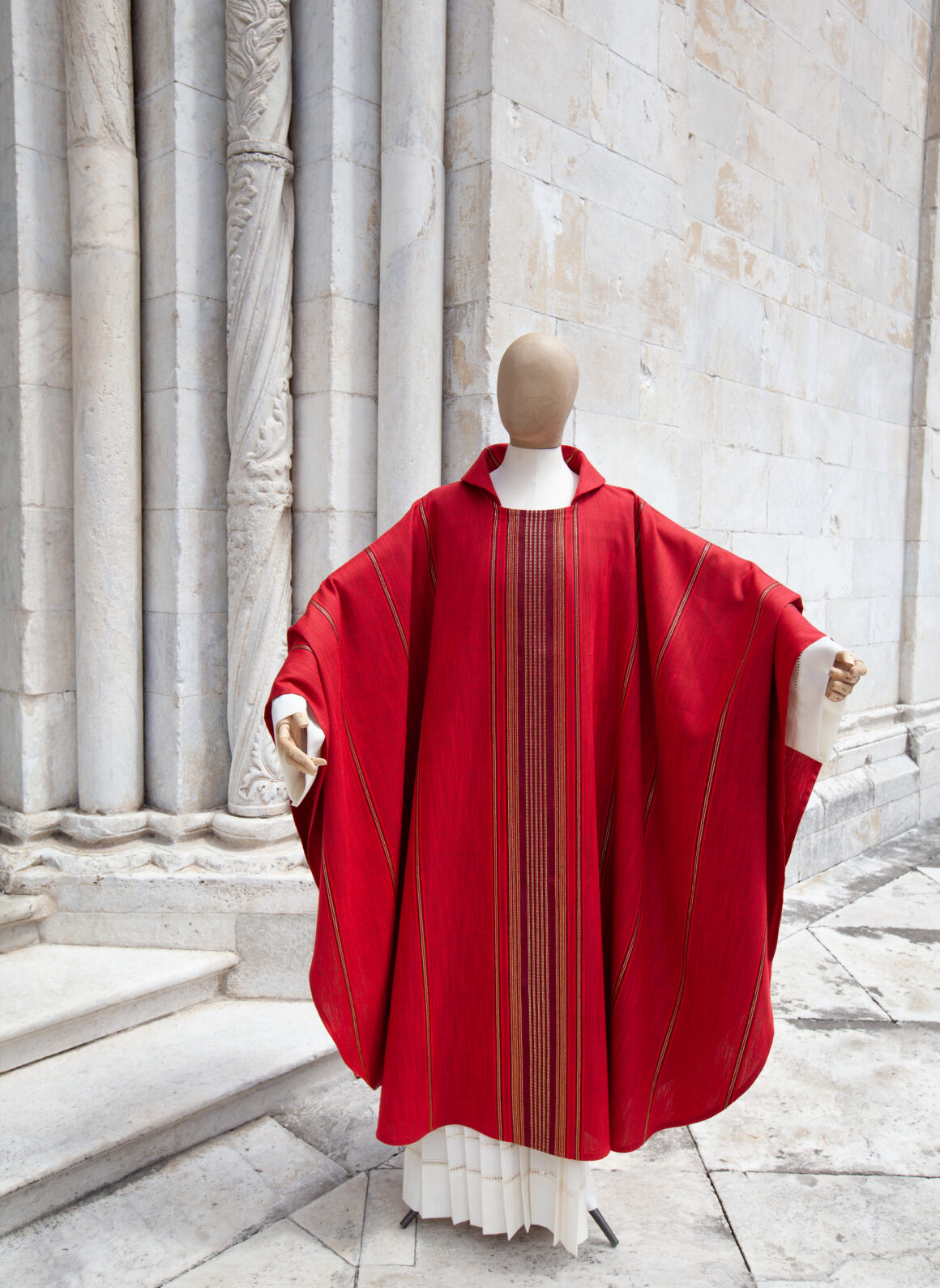
Martyrdom is described by Innocent III as a sign of total love for Jesus, which is why red vestments should take precedence when multiple feasts overlap on the same day.
Red is also used on Pentecost, commemorating the descent of the Holy Spirit upon the apostles in the form of tongues of fire. In this context, the red color symbolizes fire and the overwhelming power of the Spirit. If the sacrament of Confirmation is celebrated outside of Pentecost, it is customary to wear red vestments nonetheless.
Red also appears on a particular occasion—the celebration of papal funerals. This tradition has its roots in the Eastern Church, where white liturgical vestments were commonly used from the beginning. However, red became the customary color for funeral rites, a practice that later spread to Rome as well.
Red in the Ambrosian Rite
The liturgical colors of the Ambrosian Rite differ from those of the Roman Rite. As for the color red, it is used on many more occasions, namely: during the Mass of Holy Thursday, on the Feast of Corpus Christi, during priestly ordinations, at First Communion celebrations, when administering the Anointing of the Sick, and on the days between Pentecost and the day before the Dedication of the Cathedral.
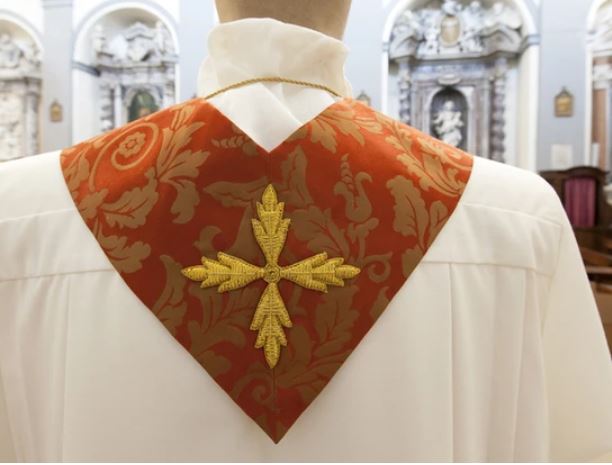
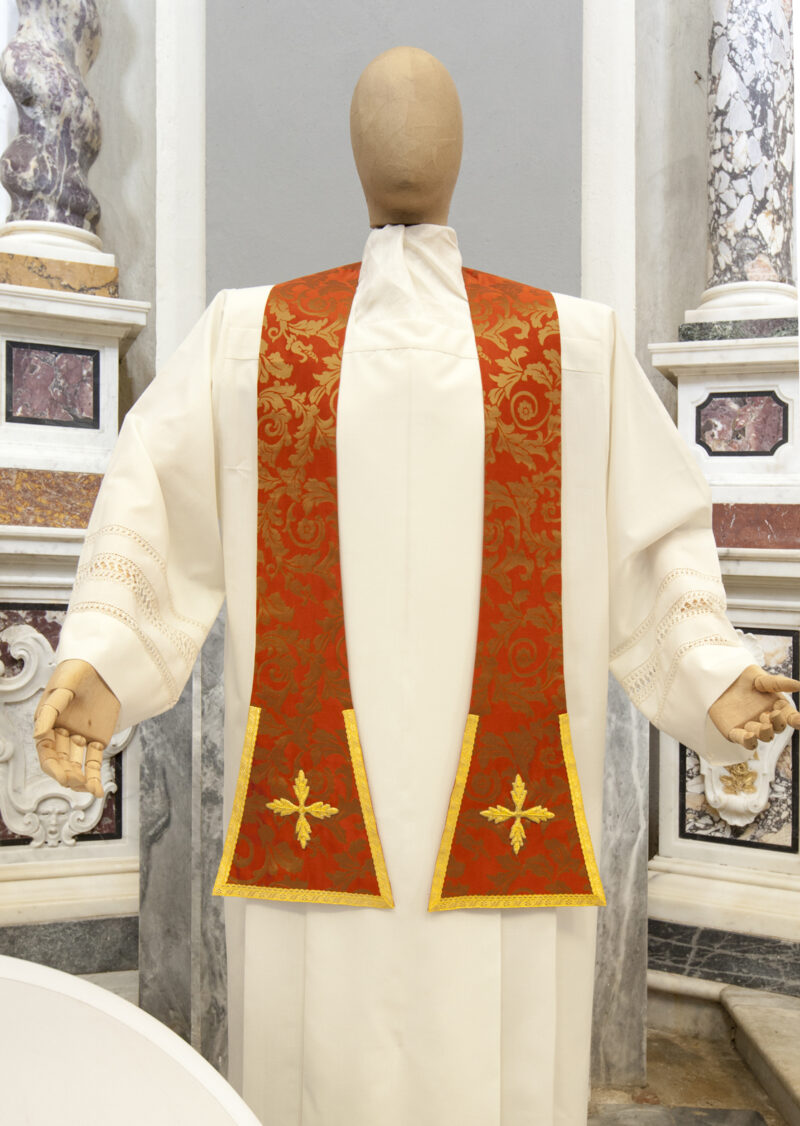
Arte Ricami is a manufacturer of hand-embroidered sacred vestments.
Follow us on Facebook e Instagram to see our latest creations. Email us at info@artericamiliturgico.com to find out where our dealers are nearest to you.
